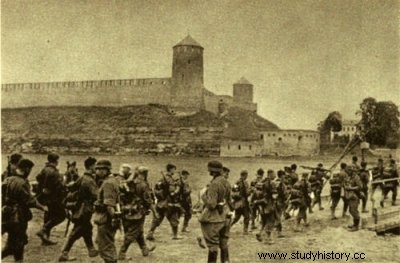
A difficult situation had arisen for the Soviet troops operating in the North-Western sector, especially in the kyiv region. Soviet troops had long contained the main forces of German Army Group South on the approaches to kyiv. The inhabitants of the city participated in the defense alongside the soldiers and the enemy was unable to take it by a frontal attack. But he won a success on the flank, in the region of Uman and Pervomaisk, which forced the Soviet command to withdraw its troops to the left bank of the Dnieper at the beginning of August.
The front had taken on an extremely unfavorable shape, that of a huge arc at the top of which was kyiv and whose branches stretched very far to the east. The German command took advantage of this circumstance and, on September 12, launched two converging attacks:from the north, with the forces of the 2nd Armored Group (starting from the Starodub area) and from the south, with the forces of the 1st Armored Group ( starting from the Kremenchug region). Soviet troops on the southwestern front, defending kyiv and the Dnieper line, were threatened with encirclement, but the supreme command did not allow them to fall back and abandon the city.
The 15th September, • the jaws of the pincers closed in the region of Lokhvitsa, 200 kilometers east of kyiv. Three Soviet armies (V', XXXVII and XXVI) and part of the forces of two other armies (XXI and XXXVIII') were surrounded. kyiv had to be abandoned, but fierce fighting continued until September 27. A new front passing through the line Bielopolié, Lebedin, Krasnograd, Novomoskovsk was formed with the units which had escaped encirclement and with reserves.
The encirclement of the troops of the South-Western front east of kyiv was a heavy defeat for the Red Army. Of 677,000 soldiers and officers on the South-Western front at the beginning of September, only some 150,000 men escaped the encirclement. Large groups of Soviet soldiers and officers broke the encirclement after September 15, tens of thousands joined the partisans, many fell on the battlefield. Among the latter were General Mikhail Kirponos, commander of the front, and many generals and officers of his staff. More than 200,000 Soviet fighters were taken prisoner. They often suffered the cruel fate of the majority of Soviet prisoners — torture and death in concentration camps.
